You don’t need a large piece of land to enjoy a harvest of fresh, crunchy long beans — just a sunny terrace, a few recycled baskets, and a little creativity! Terrace gardening has become one of the most popular urban trends, helping city dwellers grow their own food in limited spaces. Among the many vegetables that thrive in containers, long beans (also known as yardlong beans or asparagus beans) are one of the easiest and most rewarding crops to grow.
In this article, we’ll walk you through how to grow long beans successfully in used recycling baskets right on your terrace. You’ll learn everything from preparing your baskets and choosing the right soil mix to caring for your plants and harvesting delicious beans. This eco-friendly method not only helps reduce waste but also turns your rooftop into a green oasis filled with nutritious food.
Why Grow Long Beans on Your Terrace?
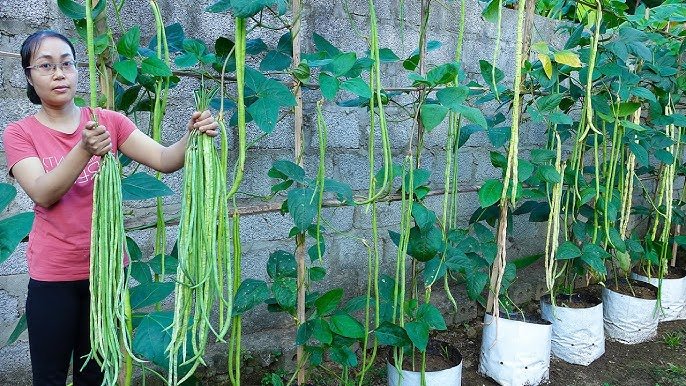
Long beans are perfect for terrace gardens because they:
- Grow vertically: You can train them to climb up trellises or ropes, saving valuable floor space.
- Are highly productive: A few plants can yield a surprising number of pods.
- Require minimal maintenance: Once established, long beans thrive with regular watering and sunlight.
- Enrich your diet: They’re packed with fiber, protein, and essential vitamins.
- Promote sustainability: By using recycled baskets, you reduce plastic waste and embrace an eco-friendly gardening practice.
Choosing the Right Recycled Baskets
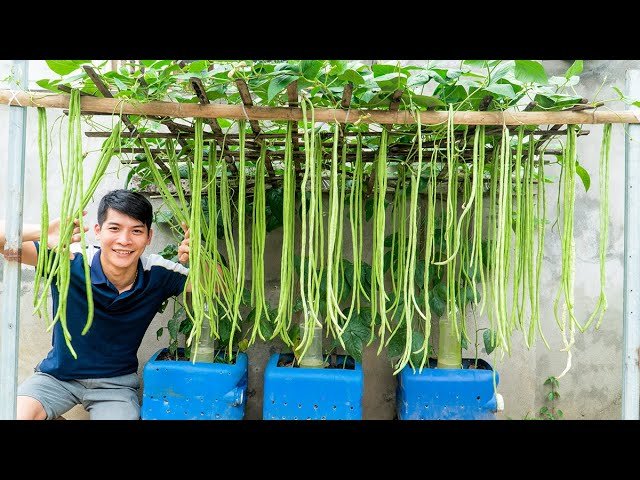
Before planting, find used plastic or bamboo baskets that can be repurposed as containers. They should be:
- At least 12–15 inches deep to allow for root development.
- Strong enough to hold moist soil and support climbing vines.
- Have enough holes for drainage or allow you to make some at the bottom.
If the basket doesn’t have drainage holes, make a few small ones using a heated nail or drill. This prevents waterlogging, which can rot the roots.
You can also line the inside of the basket with a thin jute cloth or old newspaper to hold the soil while still allowing drainage.
Preparing the Ideal Soil Mix
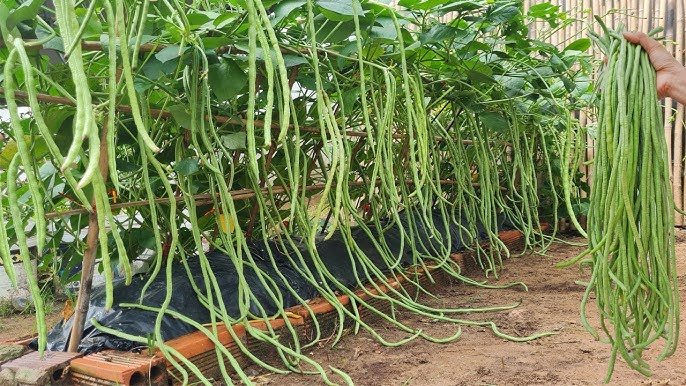
Long beans grow best in light, well-draining, and nutrient-rich soil. A perfect potting mix for terrace baskets includes:
- 40% garden soil
- 30% compost or cow dung manure
- 20% coco peat or coir fiber
- 10% sand or perlite for drainage
Mix these ingredients thoroughly before filling your baskets. Add a handful of wood ash or bone meal to boost potassium and phosphorus — essential for flowering and fruiting.
Selecting and Preparing the Seeds
You can purchase long bean seeds from a local nursery or garden store, or even save them from a mature pod of your previous harvest. To improve germination:
- Soak the seeds in lukewarm water for 8–10 hours before sowing.
- Drain and dry them slightly on a paper towel.
- Choose healthy, plump seeds for best results.
Step-by-Step Guide to Growing Long Beans in Recycled Baskets
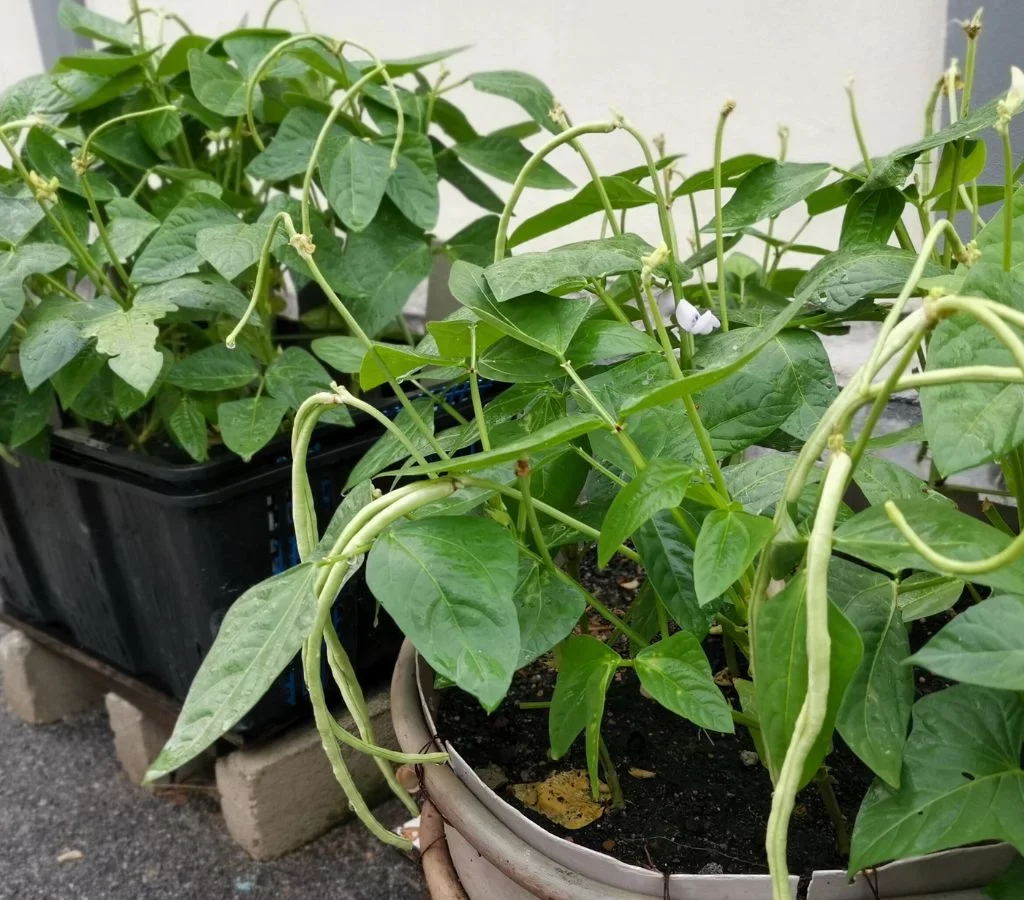
Step 1: Fill the Basket
Fill your prepared basket with the soil mix, leaving about 2–3 inches of space at the top. Level the surface and moisten the soil slightly before planting.
Step 2: Sow the Seeds
Plant 2–3 seeds per basket, about 1 inch deep. Cover them lightly with soil and press gently. Water the surface using a spray bottle or watering can with a fine nozzle.
Keep the basket in a warm, sunny location — germination usually begins within 5–7 days.
Step 3: Provide Support for Climbing
Once the seedlings reach about 6 inches tall, they’ll begin to develop vines. Long beans are natural climbers, so they need support structures like:
- Bamboo poles
- Ropes tied to terrace railings
- Wire mesh or netting
Tie the vines gently and train them upward as they grow. The vertical growth not only saves space but also improves air circulation and sunlight exposure.
Step 4: Watering Routine
Long beans prefer consistent moisture but not soggy conditions. Water your baskets:
- Daily during hot weather.
- Every 2–3 days in cooler conditions.
Always water at the base, avoiding wetting the leaves to prevent fungal issues. Mulching with dry leaves or coco husk helps retain moisture and reduce evaporation.
Step 5: Sunlight and Temperature
Place the baskets in a location that receives 6–8 hours of sunlight daily. Long beans love warmth and perform best at temperatures between 25–35°C (77–95°F).
If your terrace gets extremely hot, provide light shade during midday to protect the plants.
Natural Fertilization Tips
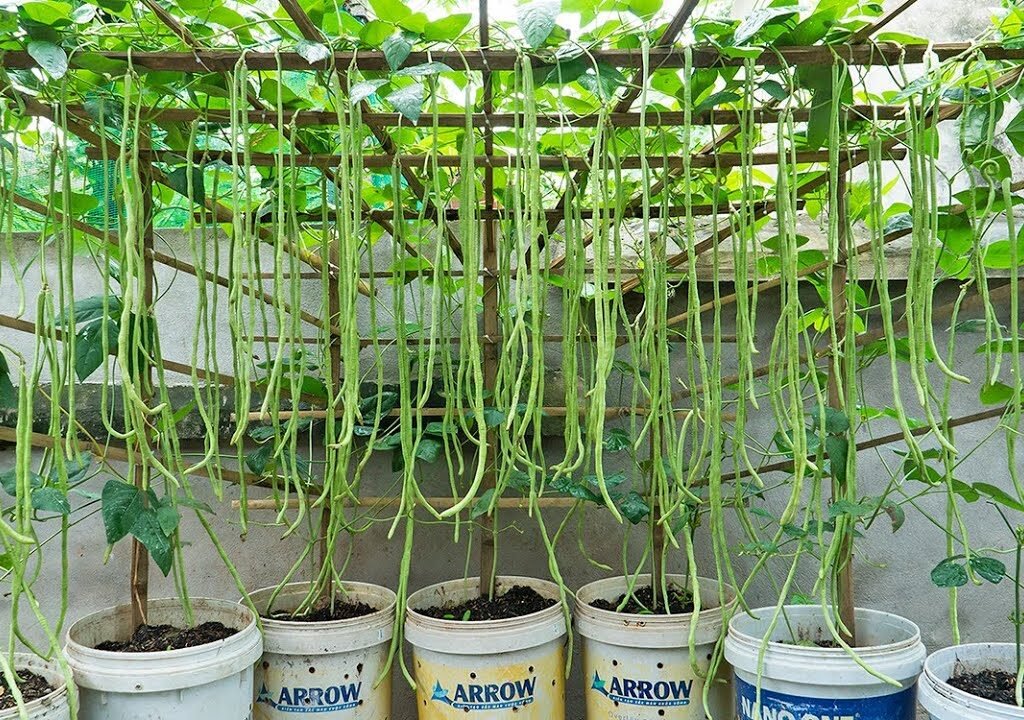
To keep your plants strong and productive, feed them organic fertilizers every 2–3 weeks. Here are some great options:
- Compost Tea: Made by soaking compost in water for 2 days and using it as liquid feed.
- Banana Peel Water: Rich in potassium, helps in flowering and fruit development.
- Eggshell Powder: Adds calcium to strengthen stems.
- Vermicompost: A natural booster for soil health and root growth.
Avoid over-fertilizing — it can lead to excessive foliage with fewer pods.
Caring for Your Long Bean Plants
- Prune regularly: Remove yellow or damaged leaves to encourage new growth and better air circulation.
- Check for pests: Long beans can attract aphids and caterpillars. Use neem oil spray once a week as a preventive measure.
- Train vines: Guide new shoots onto the trellis to avoid tangling.
- Pollination: Long beans are mostly self-pollinating, but a gentle shake of the vines can help transfer pollen for more pods.
Flowering and Pod Development
After 35–40 days, the plants begin to flower. These delicate purple or white blooms soon turn into slender pods that grow rapidly. Within another 10–15 days, your terrace garden will display long, hanging bean pods — often reaching 12 to 20 inches in length!
Harvesting at the right stage is crucial. Pick the pods when they are tender, green, and smooth — waiting too long makes them tough and fibrous. Regular harvesting encourages new pods to form, extending your yield for several weeks.
Common Problems and Easy Solutions
Even with proper care, you might face a few common issues. Here’s how to handle them:
- Yellowing Leaves: Often caused by waterlogging or poor drainage. Ensure holes are open and soil is loose.
- Slow Growth: Add a dose of compost tea or seaweed extract to improve nutrient availability.
- Pests (Aphids, Caterpillars): Spray neem oil mixed with soap water once every 7 days.
- Powdery Mildew: Maintain spacing between plants and avoid overhead watering.
Eco-Friendly Benefits of Recycling Baskets
Growing in used baskets is not only practical but also environmentally responsible. Here’s why this method stands out:
- Reduces plastic waste: Instead of throwing away old containers, you give them a new purpose.
- Affordable gardening: You save money by reusing household items instead of buying expensive pots.
- Better aeration: Baskets provide excellent air circulation to the roots.
- Lightweight: Easy to move around your terrace for optimal sunlight.
By turning waste into resource, you’re contributing to a greener planet and a healthier lifestyle.
Harvest Time and Storage
You can begin harvesting long beans within 50–60 days of planting. Pick them regularly every 2–3 days to promote continuous production.
For storage:
- Keep freshly harvested beans in a cool, dry place or refrigerate them in a breathable bag.
- Use them within 3–4 days for the best flavor and texture.
Cooked long beans are delicious in stir-fries, curries, soups, or even salads — making them a versatile addition to your kitchen.
Final Tips for Success
- Rotate your containers after each crop to refresh the soil and avoid nutrient depletion.
- Combine long beans with other terrace crops like tomatoes, chili, or spinach for variety.
- During monsoon or extreme heat, protect your plants with a shade net or plastic cover.
- Encourage kids and family members to join the process — it’s a fun, educational activity that connects everyone with nature.
Conclusion
Growing long beans on your terrace using recycled baskets is proof that you don’t need a traditional garden to produce your own healthy vegetables. With just a few reused materials, organic soil, and sunlight, you can enjoy a thriving mini-farm in the heart of your city.
This method is eco-friendly, space-saving, and budget-conscious, making it perfect for urban gardeners of all skill levels. Not only will you get delicious, homegrown beans, but you’ll also help reduce waste and live more sustainably.
So, the next time you see an old basket lying around, don’t throw it away — turn it into a productive container for your next crop of long beans. In just a couple of months, you’ll be harvesting your own fresh produce from your terrace, one basket at a time!
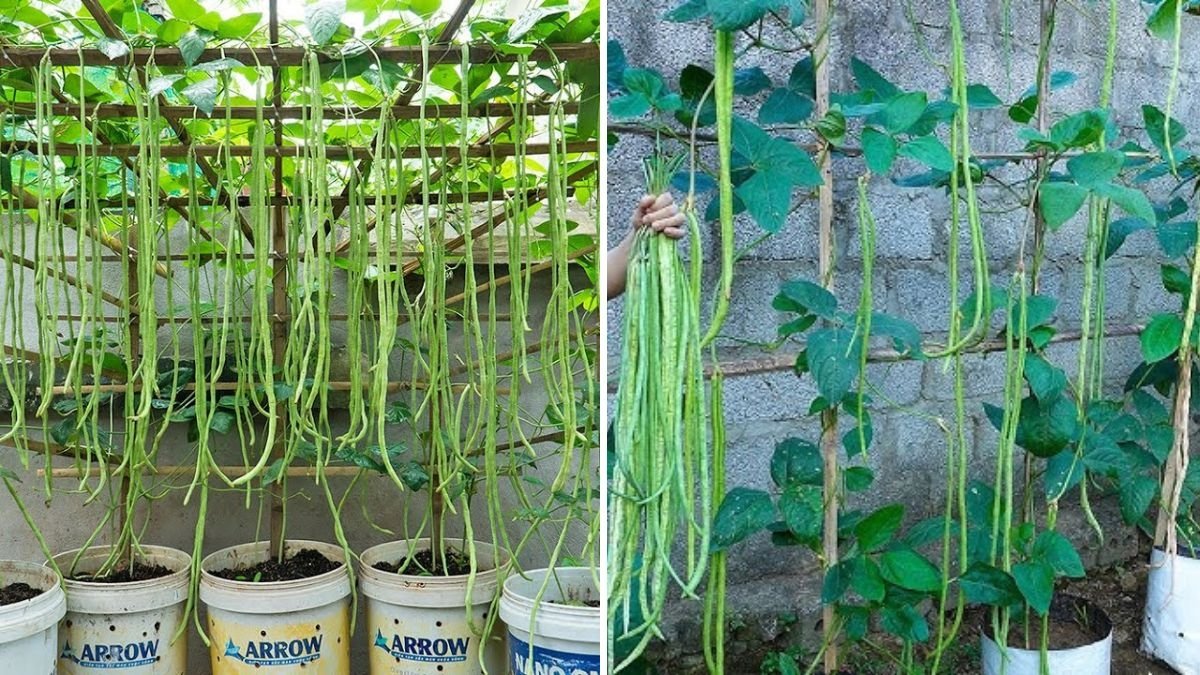
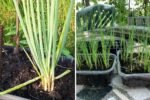
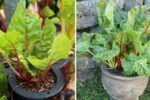
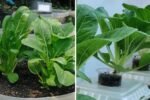
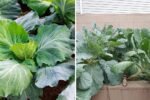
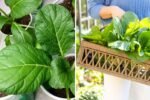
Leave A Comment